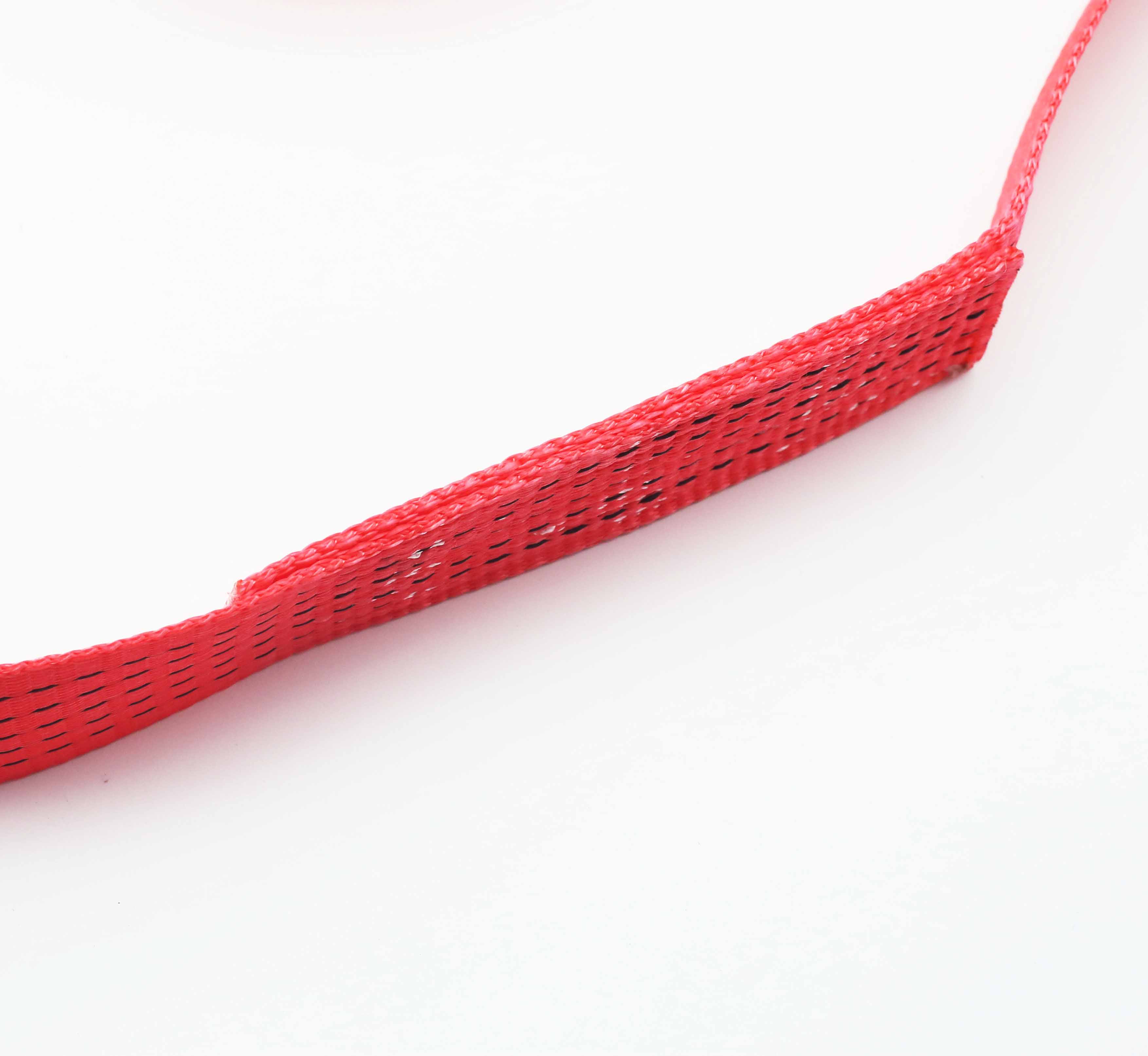Round slings and flat webbing slings are both types of lifting slings used in material handling and rigging applications, but they have different designs and characteristics.
As the name suggests, round slings have a circular or tubular shape. They are typically made of synthetic materials like polyester or nylon.
Flat webbing sling: Flat webbing slings, on the other hand, have a flat, belt-like shape. They are usually made of polyester or nylon and feature a flat surface for load distribution.

Round slings are more flexible than flat webbing slings. This flexibility allows them to conform closely to the shape of the load being lifted, providing better load support.
Flat webbing sling: While still flexible, flat webbing slings are less pliable than round slings. They are better suited for loads with flat surfaces or edges.
Round slings distribute the load evenly over a larger area due to their circular shape. This helps to reduce pressure points and prevents damage to the load.
Flat webbing slings also distribute the load evenly, but the distribution may not be as uniform as with round slings, especially when lifting irregularly shaped objects.

Round slings tend to be more durable and resistant to abrasion compared to flat webbing slings. The absence of edges reduces the likelihood of fraying or cutting.
Flat webbing sling: Flat webbing slings are durable but may be more prone to abrasion and cutting if not properly protected from sharp edges or rough surfaces.
Round slings are easier to handle and store due to their flexible and compact nature. They can be coiled or folded without causing damage.
Flat webbing sling: Flat webbing slings can be bulkier to handle and store, especially in larger sizes, as they cannot be compressed as easily as round slings.
In summary, round slings are typically more flexible, provide better load distribution, and are more durable than flat webbing slings. However, the choice between the two depends on factors such as the shape and weight of the load, as well as the specific requirements of the lifting operation.
